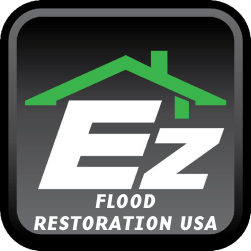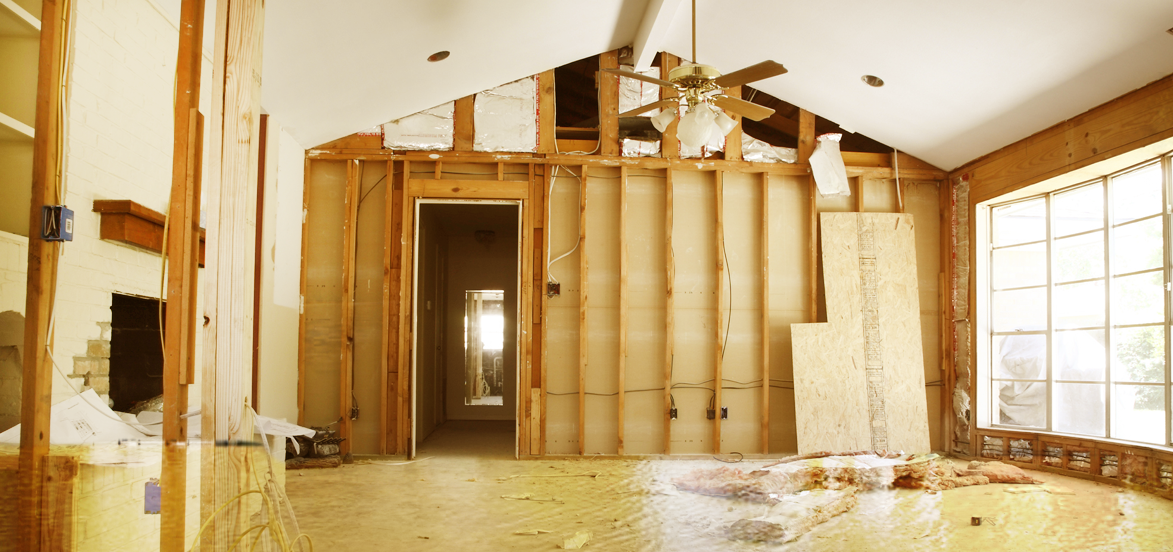7 Immediate Steps to Take After Flood Damage In Your Home
Floods are known to be triggered by large thunderstorms. During heavy rains, even gently flowing streams can turn into torrential waters, resulting in flash flooding. Floods are defined as rapid flooding that occurs within six hours of heavy rain or other causes such as dam breaks or mudslides.
Because the rapidly moving waters catch people off guard, floods are highly hazardous. The sudden release of high water can trap people and animals in their homes or businesses. Flash floods are an unavoidable threat to travelers because they occur unexpectedly.
Rain falls on every inch of the globe, putting the entire planet at risk of flooding. During floods, busy highway underpasses and isolated rural fields have been known to be submerged. Floods are also a risk on city streets. Usually, calm creeks can rage during flash floods. People are advised to prepare for the immediate aftermath of flash floods due to their pervasiveness. It’s crucial to keep people and animals safe. It’s also essential to keep your property safe from further damage.
As homes are a place that provides you with a sense of security and tranquility. So, it’s understandable that you feel helpless and vulnerable after a disaster or damage to your home. When you’re dealing with a weakened roof, HVAC leak, busted pipes, overflowing appliances, sewage backup, or another occurrence, you need to count on professional flood damage repair services to get your home and life back to normal. Depending on the extent of the damage, repairs can take anywhere from a week to months. But seeking the problem immediately after a flood is necessary. So, keep reading to know about the top 7 steps needed to be taken to restore your home sweet home to normal. So, let’s begin!
Step 1: Take Immediate Action in Case Of An Emergency
The first thing you must do in the event of a flood disaster in your home is to respond to any emergencies. Here are some examples:
- Ensure that everyone in the house is safe and accounted for.
- If your home is filled with water, call the flood damage access department.
- If a pipe has burst and is flooding your home, turn off the water source or the main supply).
- If you can’t safely escape waterlogging, go to the top floor or roof.
- If you are in danger or can’t handle it all yourself, you should immediately call the flood damage restoration.
- If it is unsafe to stay at home, you should leave.
Your first thoughts might be about your house and belongings, but those can wait. Act quickly.
Step 2: Before Entering Your Home, Make Sure It’s Free Of Electrical Hazards.
Flooded homes pose a variety of risks that can result in serious injury. According to the Federal Emergency Management Agency, check for structural damage, such as cracked, warped, or loosened foundations. Contact utility companies before entering the home if you suspect damage to water, gas, sewer, or electric lines.
Turn off all water and electricity before entering any flooded home. Even if you’ve lost power, you should turn off the primary circuit so that you don’t end up in standing water and risk electrical shock when the power comes back on.
Step 3: When Entering, Wear Protective Gear.
The floodwater in your home may contain chemicals or sewage. When entering the house, wear waders, hip/waist-high waterproof boots, rubber gloves, and remove any water-damaged items. Boiling water is also recommended by the Federal Emergency Management Agency (FEMA) until local authorities have time to inspect and ensure that the water supply is safe.
Step 4: Determine The Extent Of The Damage.
Assess the damage caused by flooding. After the emergency has been dealt with, take a step back and assess the situation as a whole, keeping safety in mind. Do not re-enter your home if it is unsafe to do so; instead, find a safe place to stay and return when it is safe to do so.
When assessing the damage, you only want to get a general idea of what happened and what has been damaged. Later on, the disaster relief company and your insurance company will thoroughly assess the damages. However, some preliminary observations will assist you in better communicating about what actually occurred with the disaster relief company to avail insurance.
Do not start cleaning up until the damage has been evaluated. One mistake that homeowners make is attempting to clean up the disaster – for example, vacuuming up the pooling water in the mistaken belief that they are assisting the situation. Cleaning up without documenting the proper evidence can hurt your claim because the insurance company requires detailed and documented proof of the disaster itself (or even get it denied).
Step 5: Contact A Damage/Disaster Company In Your Area
When a disaster strikes, most homeowners contact their insurance company right away. While it is critical to contact your insurance company as soon as possible, there are a few reasons why you should contact your local damage or disaster company first.
For one thing, you might decide not to go through your insurance in some cases – and how would you know until someone assesses the damage? Some insurance policies have high deductibles, so it makes sense to avoid filing a claim if the damage is less than that. If you’ve filed lawsuits in the past, you may be concerned about your premiums rising or, worse, your policy being canceled. Your disaster relief company can assess the damage and advise you on whether or not you should pursue insurance coverage.
Another reason to contact a disaster relief company first is that they will take care of almost everything. After you’ve received an initial assessment and advice on whether or not you should use your insurance, the only thing left to do is file a claim. The disaster relief company will then clean up the disaster, gather evidence, obtain estimates, deal with the insurance adjuster, negotiate to get you the most claim money possible, and assist you in rebuilding, restoring, or upgrading your home. In this stressful situation, calling the flood damage repair company in San Diego first is a great way to relieve some of your stress.
The insurance company will try to persuade you to use their “preferred provider,” the final and perhaps most important reason to call your local water damage restoration company in San Diego first. You have the legal right to select your own disaster relief company! However, the insurance company persuading you to use one of their preferred providers usually is not in your best interests. As they :
- Have special pricing arrangements with that provider, so the insurance company wants you to use them.
- As a result, the ‘preferred provider’ of water damage restoration in San Diego has a conflict of interest: they are not only working for you but also for the insurance company!
- Because they work with the insurance company, they will try to keep prices low (or lose valuable referral business if they are no longer a preferred provider).
- Due to the need to keep costs low, using the preferred provider may impact the quality of the work you receive and the amount of money you receive from your insurance claim.
You have the right to conduct research and select the best flood damage repair company in San Diego you believe is the most appropriate for your house in San Diego. The top flood damage restoration company in San Diego will offer a one-stop solution for flood damage.
Step 6: Contact Your Insurance Company
An emergency flood damage restoration team should arrive quickly and aim to arrive at your home within 60 minutes, regardless of how far away you live and the drive time. As a result, it’s a good idea to contact our experienced water damage repair team in San Diego first to get an estimate of the damage before calling your insurance company.
Last but not least, homeowners wonder how much of their disaster will be covered by insurance. Evidence, estimates, pricing, and depreciation of items will be used to make this decision. By the way, many insurance policies will cover the entire cost of the damage. However, this is not the same as being wholly reimbursed.
The most important reason to choose your own flood damage repair company in San Diego rather than relying on the insurance company’s “preferred provider” is quality water damage restoration on time without breaking your bank. During the claims process, the renowned flood damage restoration in San Diego will act as your advocate and help you recover the maximum insurance money possible.
Step 7: Start The Cleanup Process Soon.
Your disaster relief company will take care of this step. To prevent further damage, some of the work will be done right away when they arrive on the scene.
For example, if you have broken windows, they will be boarded up, and if you have a hole in the roof, it will be filled. It prevents further damage, such as theft or rain-related water damage. In water damage, it’s also critical to get the drying process started right away. Mold can grow within 72 hours of water damage, and since this is unlikely to be covered by insurance, the flood restoration team’s top priority will be to clean up the water.
Some homeowners believe that performing their cleaning will save them money. It is a wrong and potentially expensive assumption. Cleaning up disasters such as floods follows a scientific procedure. Improper cleanup can spread the damage, necessitating a more expensive cleanup later. Choose a proper flood damage restoration service in San Diego that you can trust and delegate the cleanup and repair of your home to them.
Wrapping Up
- Before entering your home, look for hazards (structural damage, live electrical lines)
- To begin the claims process, contact your insurance company
- Make an appointment for a flood insurance adjuster to come out and assess the damage.
- Before entering, make sure your health is in good shape.
- Before removing any water, take photos and videos of all the damage.
- To begin the cleanup process as soon as possible, contact a certified restoration company.
Following the above checklist in the first 24 hours after a flood will help you minimize damage to your home and belongings while reducing the risk to yourself and other occupants. It also puts you in a position to apply for and receive the best insurance coverage possible and get the best flood damage repair company in San Diego.
You can count on our emergency flood damage restoration services in San Diego available 24 hours a day, seven days a week to get relief from flood damage as soon as possible. At any time for flood relief, look for the best way to deal with it permanently.


